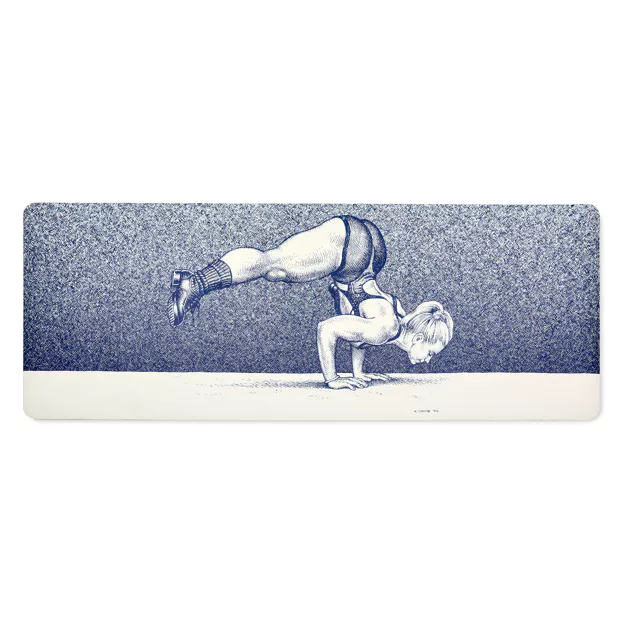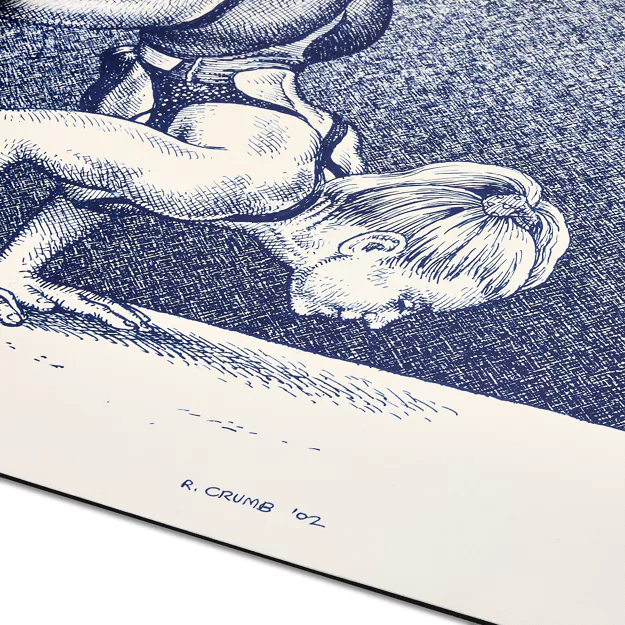About the artwork:
This work is from the latest iteration of Dorland's ongoing series screen scrapes. The screen scrape paintings merge and collapse the physical language of painting and the digital screen space of technology onto a single plane. The painted surface becomes a body, or main frame, which the digital source code can harvest and proliferate itself onto.
Made entirely in the studio, the surfaces are built up using many layers of plastic polymer paints to create an archeological skin onto which the printed skin is grafted. This fossilized topology is built up over multiple sessions as layers of paint and pigment are scraped and pulled across the linen surface. Using a hydro transfer method a printed membrane is then embedded into the plastic polymer. The resulting effect collapses the painted and printed areas into a single surface that the eye can no longer distinguish between the different media. What is painted appears printed and what is printed appears painted; creating a visual metaphor for our increasing inability to distinguish between what is reality and what is simulation.
About the artist:
Chris Dorland’s work is a dystopian vision of the human-built world filtered through the sublimated violence of abstraction, consumerism and technology. Working with a variety of screens, scanners and drones, Dorland is interested in the ways in which machines increasingly perceive, record and reproduce the world through data visualisation, scanning hardware and other optical devices. Dorland moves between the scanning devices and printers, allowing the various machines to document, distort and produce new images of the world which he then transforms into the language of painting.
Chris Dorland (b.1978) is a Canadian/American artist living and working in New York. Chris Dorland’s work is a dystopian vision of the human-built world filtered through the sublimated violence of abstraction, consumerism and technology. Working with a variety of screens, scanners and drones, Dorland is interested in the ways in which machines increasingly perceive, record and reproduce the world through data visualisation, scanning hardware and other optical devices. Dorland moves between the scanning devices and printers, allowing the various machines to document, distort and produce new images of the world which he then transforms into the language of painting.
The works presented are the latest iteration of Dorland's ongoing series screen scrapes. The screen scrape paintings merge and collapse the physical language of painting and the digital screen space of technology onto a single plane. The painted surface becomes a body, or main frame, which the digital source code can harvest and proliferate itself onto.
Made entirely in the studio, the surfaces are built up using many layers of plastic polymer paints to create an archeological skin onto which the printed skin is grafted. This fossilized topology is built up over multiple sessions as layers of paint and pigment are scraped and pulled across the linen surface. Using a hydro transfer method a printed membrane is then embedded into the plastic polymer. The resulting effect collapses the painted and printed areas into a single surface that the eye can no longer distinguish between the different media. What is painted appears printed and what is printed appears painted; creating a visual metaphor for our increasing inability to distinguish between what is reality and what is simulation.
Chris Dorland's work is part of the collections of Whitney Museum of American Art, The Bronx Museum of Art, Microsoft, Dawson College, Neuberger Berman, The Juilliard School of Art, The Langham, Chicago IL, The Sigg Art Foundation, SZ. Past exhibitions include the Front International, Cleveland Triennal for Contemporary Art ; Museum of Contemporary Digital Art (MOCDA) ; Super Dakota, Brussels ; Annka Kultys Gallery, London ; Lyles & King, New York ; Marianne Boesky Uptown, New York ; Marc Selwyn Fine Art, Los Angeles.






